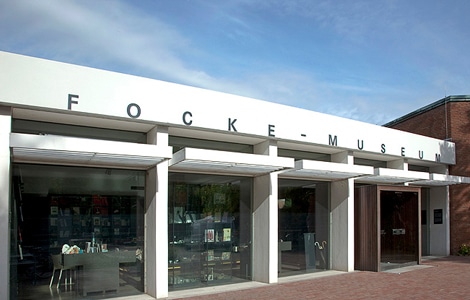Focke Museum
Customer since 2019
Focke Museum upgrades collection management with DAM system easydb
The Bremen State Museum of Art and Cultural History conveys the history of the city of Bremen and its people in a supra-regional context by means of approximately 100,000 objects on arts and crafts and design, photography and art. The Focke Museum with its five buildings and changing offers is one of the highlights of the region. In order to present the objects in an even more attractive multimedia way and at the same time to relieve the museum team, DAM United was commissioned with the development of a comprehensive multimedia automation solution.

Task: Management of images and inventory images
As is common in museums, the Focke Museum also uses professional inventory software (until now AdLib, soon Axiell Collections) to inventory, manage and organize its collections. However, some of these solutions offer only limited functionality to manage digital assets such as images, videos or PDF files separately or together with the objects and to use them for presentation and marketing.
The experts at DAM United advised the Focke Museum on the implementation of a comprehensive multimedia object solution tailored to its specific requirements. The team from Berlin and Essen assisted with the creation of a requirements catalog and the selection of the system for image management. Thanks to years of experience and close networking with manufacturers, the DAM consultants have a very good overview of the market. The flexible and web-based digital asset management (DAM) system easydb from Programmfabrik turned out to be the most suitable during the evaluation. easydb is also established as a collection management tool and can combine object and image management, but in this project the focus was on DAM.
In the next step, DAM United developed an efficiency-enhancing interface between AdLib/Axiell Collections and easydb. This was because the requirement was not only to introduce a DAM system for image management, but also to handle the interlocking of images and objects. The process created for the images replaces a manual system and thus reduces the effort of the museum team.
New images are imported into easydb by a photographer and other staff members, where they are assigned to the appropriate object/objects. DAM United has adapted easydb with appropriate filter options, categorization, rights management, etc. to the wishes and working methods, so that from the large scope of easydb the functions that are important for daily needs are easily accessible. Thus, images can be quickly and clearly created and provided with metadata and thus quickly found and used accordingly by events, seasons, locations, object types, image size, etc.
In the inventory software, only one main image is ever displayed for the object with a reference to further secondary images and multimedia files that are available in easydb. The developed interface ensures synchronization between both systems without manual intervention. Another time-saving innovation is the possibility to receive images in freely selectable formats directly from the DAM system. Instead of downloading images locally, as is often the case in practice, cutting them to size with a program, saving them in the desired size/format, and then using them, this now happens with one click. Using a simple input mask, images can be quickly made available bundled in various ready-made formats.
The export function created by DAM United goes one step further: museum staff can tag specific objects in easydb and play them out in applications such as a web app or websites with one click, along with the associated object information and assigned assets (main image, secondary image, multi-media assets). This way, new collections or newly curated topics can be transferred with little effort and full image and data content. For this purpose a database is filled from easydb, from which in turn the webapp fetches the required data. The interface easydb – database – web application also updates when changes have been made to the object, e.g. new images have been assigned, images have been deleted or changes to the object’s metadata have been recorded; the current status is always transferred.
"We are very satisfied with the created multimedia solution by extending our object management with the DAM solution easydb. It supports our processes, automates importing and increases the flexibility of displaying all images. Basically, it simplifies the use of images, in the future, for example, in marketing. We are much more efficient with our team and can implement the offers for our visitors faster in many areas."
Martin Luther, Project Manager at the Focke Museum
